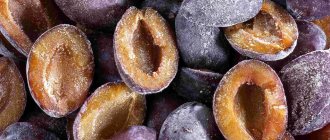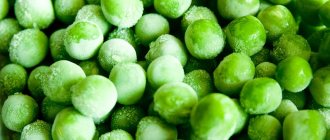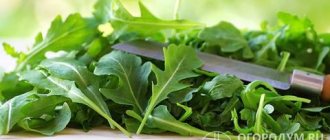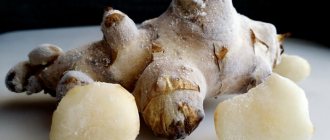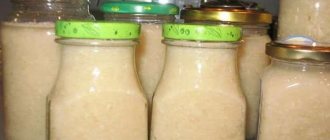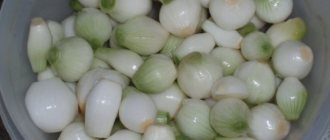Beets are included in many different dishes, primarily cold appetizers and salads. Storing the harvested crop raw is not always convenient, since at home root crops (especially early-ripening varieties) do not have a long shelf life - they dry quickly, rot, wither, wrinkle, becoming soft, in a word, they spoil. Therefore, many housewives prefer to freeze beets for future use, including them in the obligatory supply of vegetables for the winter.
Freezing root vegetables that have undergone pre-heat treatment reduces the time it takes to prepare them at the right time.
When frozen, you can preserve a large amount of the desired vegetable, since compressed packages with crushed raw materials do not take up much space in the freezer. This preparation allows you to prepare any beet dish much faster. From the point of view of benefits, it is more correct to freeze this root vegetable in its raw form, without subjecting it to heat treatment, but there are other methods with preliminary blanching, boiling, stewing, sautéing and frying.
Raw
To begin with, root vegetables are washed, thinly peeled with a vegetable peeler, grated or chopped. How exactly to chop the vegetables is decided by the housewife herself, depending on what dishes she plans to add the preparation to in the future. The cutting can be arbitrary or into pieces of the same shape: sticks, strips, cubes, circles, and also shaped using carving knives.
To speed up the process, it is advisable to use special kitchen appliances
It is recommended to lightly sprinkle the crushed mass with lemon juice or natural vinegar to preserve the rich beet color, and mix. Excess liquid should be carefully drained by squeezing out the vegetables or blotted with napkins. Next, the product is laid out in portions into bags, from which it is advisable to remove the air with a vacuum sealer. The workpiece packaged using this device fits into the freezer much more compactly. After defrosting, chopped or grated raw beets can be conveniently used in their natural form as an additional or main ingredient in vegetable salads; if necessary, they can be conveniently fried, boiled or stewed.
Sometimes fresh young beets are frozen entirely . To do this, small-sized root crops without signs of spoilage are sorted. The peel is usually not cut off, but thoroughly washed with water, removing dirt with a brush with stiff bristles. Wipe with napkins, removing excess moisture, put into bags and put in the freezer. It is worth keeping in mind that with this method of preparation, gaps and cavities filled with ice may occur inside the fruit, and such a product, after defrosting, is not suitable for cutting and decorating dishes.
It makes sense to cut larger specimens into halves or quarters
Recipes
In addition to the standard freezing of beets, there are other recipes: freezing fried beets and carrots, frozen borscht preparation, vegetable cocktail, frozen vegetable frying, etc.
You can safely combine beets with other vegetables and come up with your own recipes for preparations.
Recipes for fresh beets and carrots:
- Wash and peel fresh carrots and beets well.
- Grate on a coarse grater and mix both vegetables.
- Divide the resulting mixture into portions.
- Place in prepared containers or bags.
- Place in the freezer.
Wash and peel vegetables
Grate on a coarse grater
Roasted vegetable recipe:
- Peel a small onion and chop finely.
- Wash the carrots and beets, peel and cut or grate.
- Fry the onion in sunflower oil.
- Add beets and carrots, reduce heat and simmer until fully cooked.
- Place the resulting mixture in a bowl on a paper towel to absorb excess oil and allow to cool.
- Place the roast in containers and put it in the freezer.
Roasted vegetables
Place in portions in the freezer
Vegetable cocktail recipe:
You will need: beets, carrots, red and green peppers, tomatoes, mushrooms.
Preparation:
- Wash beets and carrots, peel and cut into cubes.
- Wash and cut peppers, mushrooms and tomatoes.
- Dry all vegetables.
- Freeze each ingredient separately.
- Mix in the required proportions and store in the freezer in portions.
Vegetable mixture for freezing can be anything
As a semi-finished product
To season borscht and soups, it is more convenient to freeze beets in blanched, boiled, stewed, sauteed or fried form, which will significantly speed up the preparation of dishes. Peeled and grated/chopped raw beets are subjected to heat treatment, bringing them to the desired degree of softness, after which they are cooled, placed into portioned containers and frozen.
Baking and steaming
It is believed that when baked and steamed, root vegetables retain more flavor and beneficial microelements than boiled ones. This treatment is usually carried out without peeling the beets. The cooked vegetables are cooled completely, and only then peeled. The pulp is grated or chopped, placed in small containers, lightly compacted. Cover tightly with lids and put in the freezer for winter storage.
Many housewives achieve the baking effect in a regular microwave.
How to freeze beets for the winter: rules!
Freezing beets for the winter can be done either raw or boiled.
Key points to know:
- It is better to freeze beets in small portions, which are usually required for preparing borscht, vinaigrette and other dishes.
- When re-frozen, beets lose all their beneficial properties.
- When freezing whole food, use the Quick Freeze function, if available.
The “quick freeze” function freezes food at -18 degrees Celsius. If there is no such function, then the beets should be frozen at a temperature of -10 to -14 degrees Celsius. This range is considered the most optimal. - Frozen vegetables can be stored for 8 months.
- You need to boil whole, unpeeled beets to preserve color and taste.
- If you want to store whole raw root vegetables, you need to rinse them well under the tap and completely peel them.
- For freezing, it is better to use table varieties. In this case, the vegetable must be young and fresh.
Containers can be used for portioning
Small and juicy root vegetables are ideal for freezing
Freezing is a great way to store not only beets, but also many other vegetables. Read detailed materials on how to freeze pumpkin, broccoli, cauliflower, hot peppers, bell peppers, zucchini, cabbage, Brussels sprouts, onions, and garlic.
Freezing beet juice
When crushing root vegetables, a lot of juice is sometimes released. Beetroot juice is a preventive and even therapeutic remedy for anemia, problems with the liver and biliary tract. It is especially useful for women during certain periods associated with the menstrual cycle. In order not to lose such a valuable product, it is also frozen. The squeezed juice is filtered through a fine sieve or cheesecloth and poured into containers that are usually used for freezing ice, since it is not consumed in large quantities. You should know that the usefulness of fresh beetroot is proportional to its shelf life, so keeping it in the freezer for more than three months is not recommended. Also, do not rush to throw away a product that has passed its “expiration date”; it can be used as a natural coloring in the process of preparing various dishes.
The juice is a concentrate of all the beneficial substances contained in beets.
Preparing for freezing
You can freeze root vegetables raw or boiled, and you can even prepare tops separately for the winter. Before harvesting, be sure to select strong, dark-burgundy-colored vegetables with no signs of rotting, spoilage, or cracks in the skin. Avoid large vegetables as they may be tough after defrosting.
Before harvesting, wash the root crop, cut off the tops, roots and peel the skin. Rinse the vegetable again and dry.
Freezing beet tops
Preparations made from beet stalks and leaves are considered no less useful. This vitamin green is very pleasant to the taste and can add variety to any dish. The freshest and youngest shoots with leaves without damage are selected for freezing, washed to remove debris and dust, and dried. It is not necessary to separate the leaves from the petioles. Cut as desired and pack into bags without pressing. Beet tops can be mixed and frozen with other greens.
You will find original ideas and step-by-step recipes for preparing beet tops for the winter in the article on our website
Selection and preparation of root vegetables
- Freezing beets begins with preliminary selection of the fruit. This is a young, not too small, but fresh product of rich burgundy or dark red color. There should be no signs of rot, mold or damage.
- The best solution is to freeze late varieties of beets. They have a rich taste and are freeze-resistant.
- Pruning of the root crop is carried out on both sides.
- The workpiece is washed well under running water and cleaned with a brush.
- The peel is removed, and must be cut very thinly. And it’s better to use a potato peeler rather than a knife.
The vegetable that needs to be frozen should not have any stubble. This is a sign of increased rigidity.
Storage conditions and periods
It is not worth storing beet preparations for a long time; it is advisable to use them within six months. Moreover, the sweeter and more sugary the vegetable, the shorter the shelf life should be. Don't forget to date the packages. It is recommended to defrost raw products gradually, at room temperature. It is unacceptable to place a frozen product (especially if it is intended for preparing raw salads) under hot water or in a microwave, even including a special mode. It is not necessary to defrost semi-finished products before adding them to hot dishes. Vegetable preparations cannot be re-frozen.
Is it possible to freeze beets for the winter?
Although beets can be stored fresh for a long time in the cellar, on the balcony, or simply in the refrigerator, freezing beets at home is not only possible, but also necessary . And at the same time, you don’t have to worry that it will lose all its beneficial substances.
The main thing is to properly prepare the vegetable. Proper cleaning of the beds is no less important. Read about this in separate articles, but in this one we will tell you what rules exist for freezing beets.
Basic freezing methods
There are several methods to freeze beets for the winter. Below we will look at each of them in more detail.
- Roast the whole beets in the oven until the core becomes soft.
- Then cool it and remove the skin.
- Cut the pulp as convenient.
- Spread the vegetable on a tray in an even thin layer and place in the freezer for 1.5-2 hours.
- The pieces will be covered with an icy crust and will not stick together.
- Place the finished product in sealed bags and be sure to sign.
- You can store it this way for several months.
- Rinse raw beets under running water and place in a deep saucepan.
- Boil until fully cooked over low heat. If the water boils too much, the root vegetable will completely lose its color.
- Transfer the boiled vegetable to cold water to cool, and then peel.
- Next you need to do the same steps as in the first method.
Housewife's secret You can cook root vegetables without the skin. In this case, it is easier to peel the vegetable; the taste and color will not be affected, but the amount of nutrients will be significantly reduced.
- Cook the root vegetable as described above.
- When it cools down, remove the skin and grind it on a grater.
- Place the grated beets in bags or food containers with tight lids. Transfer the container to the freezer.
Boiled, grated and whole for salads
Freezing boiled beets for the winter is suitable for further preparation of salads. Processing occurs in the same way as described. However, instead of boiling, baking in an oven is acceptable. The cooked vegetable is cooled and peeled. You can freeze boiled beets as is, or you can grate, cut in any way you like and store until needed.
If the housewife does not like to tinker with a shredder when creating dishes, it is better to chop the vegetable at the preparation stage. Boiled and frozen beets in a processed form will allow you to minimize cooking time in the future.
Experts advise boiling the fruit unpeeled with the rhizome intact. This will preserve the color.
- the water temperature is brought to 100 degrees;
- fruits are dipped in boiling water;
- Boil until fully cooked. Check using the tines of a fork or toothpicks.
The root vegetable is cooked for about 2-3 hours, but old beets are processed longer. The size and type of vegetable also affect the cooking speed. Cooled beets are much easier to peel than raw ones.
After processing, the crop is cooled. Now it’s time to decide whether to freeze the whole fruit or cut it. By choosing slices, you can save space in the refrigerator.
The workpiece is distributed into pre-prepared containers and placed in the cold. The best option is “super freezing” or shock mode. But if they are not there, you will have to make do in the standard way.
MOST READ FROM PARTNERS
For the vinaigrette
For the vinaigrette, boiled beets of a rich burgundy hue are used. The products are prepared as follows: wash, boil, cool. Now you can freeze it. You can also pre-chop it into cubes.
Grinding the root vegetable will simplify the cooking procedure. And the cooking time will be halved. It can be immediately added to dishes after removal from the chamber. Before freezing, beets are cut into strips, grated or chopped into cubes. The option depends on preference. The workpiece is laid out in portions into containers and put into the freezer until required.
MOST READ FROM PARTNERS
Freezing raw beets
Raw vegetables are also stored in the freezer, but the peel is first cut off. Peeled beets need to be grated and chopped in a blender or food processor. Can be finely chopped with a knife. The small pieces are then packed into your existing containers or bags, sealed tightly and placed in the freezer.
If you freeze it whole, you will need to defrost it correctly:
- Place the whole vegetable in water with a small amount of acid (acetic acid will do).
- Cook until tender and then gradually cool.
- The next step is peeling the shell.
- The cleaned product is sliced and cut into the shape needed to prepare the chosen dish. At the same time, the original color of the beets remains just as bright, since we treated them with acid in advance.
After defrosting, the mass of the beets will become slightly different and lose its elasticity. During freezing, water penetrates deep into the mass between the fibers of the vegetable and thereby damages its original integrity.
If you use a refrigerator to store fresh product, you should not deprive the vegetable of its natural shell, since it is this shell that allows you to preserve its beneficial properties and prevent germs from getting inside. The same applies to tops. It retains nutritional properties that will help keep the product fresh.

